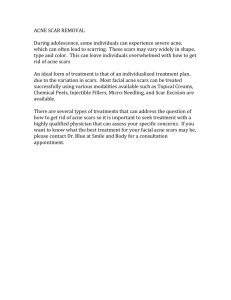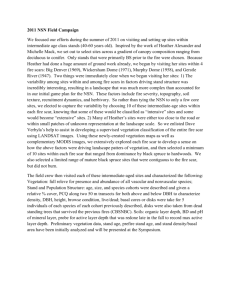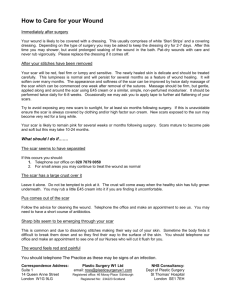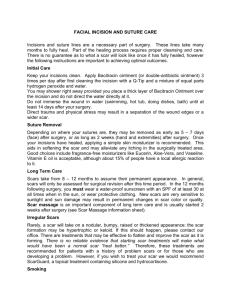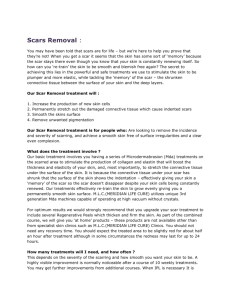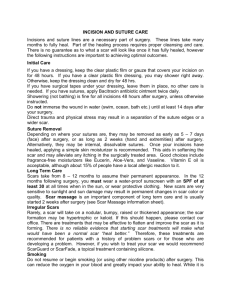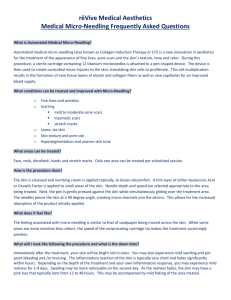Scar Lymphedema: Fact or Fiction
advertisement
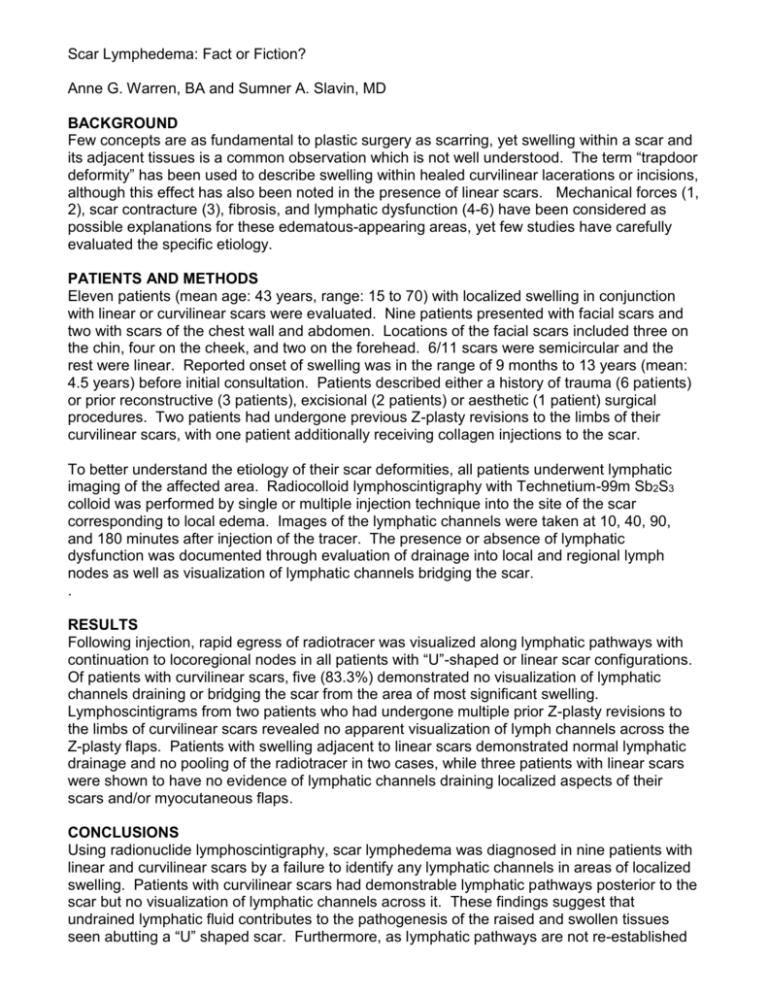
Scar Lymphedema: Fact or Fiction? Anne G. Warren, BA and Sumner A. Slavin, MD BACKGROUND Few concepts are as fundamental to plastic surgery as scarring, yet swelling within a scar and its adjacent tissues is a common observation which is not well understood. The term “trapdoor deformity” has been used to describe swelling within healed curvilinear lacerations or incisions, although this effect has also been noted in the presence of linear scars. Mechanical forces (1, 2), scar contracture (3), fibrosis, and lymphatic dysfunction (4-6) have been considered as possible explanations for these edematous-appearing areas, yet few studies have carefully evaluated the specific etiology. PATIENTS AND METHODS Eleven patients (mean age: 43 years, range: 15 to 70) with localized swelling in conjunction with linear or curvilinear scars were evaluated. Nine patients presented with facial scars and two with scars of the chest wall and abdomen. Locations of the facial scars included three on the chin, four on the cheek, and two on the forehead. 6/11 scars were semicircular and the rest were linear. Reported onset of swelling was in the range of 9 months to 13 years (mean: 4.5 years) before initial consultation. Patients described either a history of trauma (6 patients) or prior reconstructive (3 patients), excisional (2 patients) or aesthetic (1 patient) surgical procedures. Two patients had undergone previous Z-plasty revisions to the limbs of their curvilinear scars, with one patient additionally receiving collagen injections to the scar. To better understand the etiology of their scar deformities, all patients underwent lymphatic imaging of the affected area. Radiocolloid lymphoscintigraphy with Technetium-99m Sb2S3 colloid was performed by single or multiple injection technique into the site of the scar corresponding to local edema. Images of the lymphatic channels were taken at 10, 40, 90, and 180 minutes after injection of the tracer. The presence or absence of lymphatic dysfunction was documented through evaluation of drainage into local and regional lymph nodes as well as visualization of lymphatic channels bridging the scar. . RESULTS Following injection, rapid egress of radiotracer was visualized along lymphatic pathways with continuation to locoregional nodes in all patients with “U”-shaped or linear scar configurations. Of patients with curvilinear scars, five (83.3%) demonstrated no visualization of lymphatic channels draining or bridging the scar from the area of most significant swelling. Lymphoscintigrams from two patients who had undergone multiple prior Z-plasty revisions to the limbs of curvilinear scars revealed no apparent visualization of lymph channels across the Z-plasty flaps. Patients with swelling adjacent to linear scars demonstrated normal lymphatic drainage and no pooling of the radiotracer in two cases, while three patients with linear scars were shown to have no evidence of lymphatic channels draining localized aspects of their scars and/or myocutaneous flaps. CONCLUSIONS Using radionuclide lymphoscintigraphy, scar lymphedema was diagnosed in nine patients with linear and curvilinear scars by a failure to identify any lymphatic channels in areas of localized swelling. Patients with curvilinear scars had demonstrable lymphatic pathways posterior to the scar but no visualization of lymphatic channels across it. These findings suggest that undrained lymphatic fluid contributes to the pathogenesis of the raised and swollen tissues seen abutting a “U” shaped scar. Furthermore, as lymphatic pathways are not re-established across scars, Z-plasty revisions may not succeed in patients with clinical “trap-door” scar deformities. Determination of scar lymphedema can assist in the selection of proper management for patients seeking scar revision. REFERENCES 1. Ju DM. The physical basis of scar contraction. Plast Reconstr Surg. 7: 343, 1951. 2. Ausin A. The “trap-door” scar deformity. Clin Plas Surg. 4: 255, 1977. 3. Hosokawa K, Susuki T, Kikui T, et al. Sheet of scar causes trapdoor deformity: a hypothesis. Ann Plast Surg. 25: 134, 1990. 4. Van Duyn J. Lymphedema in face scars. South Med J. 62: 1149, 1969. 5. Van Duyn J. First appearance of lymphedema in facial scars. South Med J. 67: 1502, 1974. 6. Kazanjian VH, Converse JM. Early treatment of facial injuries. In: Kazanjian, V. H. and Converse, J. M., eds. Surgical Treatment of Facial Injuries. Baltimore: Williams & Wilkins Co., 1974
